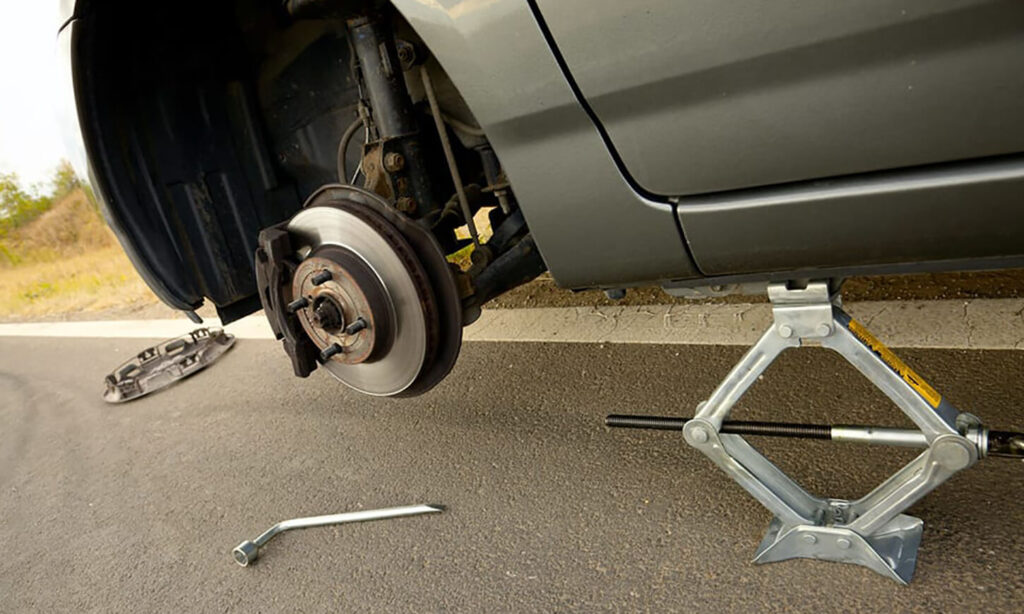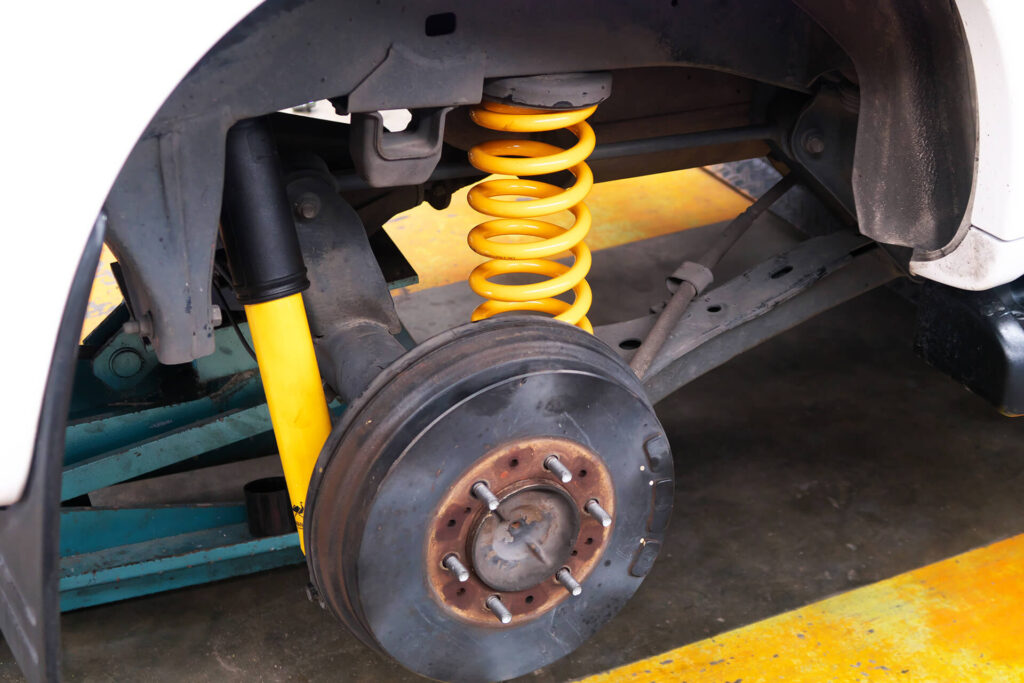The Unseen Dangers of the Open Road
Driving along a scenic highway or cruising through city streets, you likely take the smoothness of your ride for granted. That comfort is largely thanks to two unsung heroes of your car’s mechanics: shock absorbers and struts. But what if they suddenly give out, turning your joyride into a jolting ordeal? Let’s delve into this critical topic and equip you for the unexpected.
Shaking Foundations: The Role of Shocks and Struts in Your Drive
You can think of shocks and struts as the unsung heroes of your vehicle’s overall well-being. They serve as the linchpin in the complex network of parts that keep your car from turning each drive into a turbulent roller coaster ride. While you might be familiar with other essential components like brakes or tires, it’s the shock absorbers and struts that allow them to function optimally. Let’s break it down.
Shock absorbers and struts play a crucial role in your car’s suspension system, serving to dampen the oscillation of your vehicle’s springs. Imagine driving over a pothole; it’s your shocks and struts that absorb the impact, controlling the up-and-down movement of the wheels. This action ensures that your tires stay consistently in contact with the road. By maintaining tire-road contact, these components provide the necessary foundation for your vehicle’s stability, steering, and braking.
Let’s talk about the comfort factor. Without properly functioning shocks or struts, each crack and crevice on the road would be felt jarringly through the steering wheel, seats, and the entire vehicle frame. The shocks and struts serve as a cushion, smoothing out the road’s imperfections. It’s not just about a smoother drive, either. A vehicle with compromised shocks and struts may not handle emergency maneuvers as expected, putting you at higher risk for accidents. Imagine trying to brake suddenly, only to find your car nose diving or swerving uncontrollably—shocks and struts help prevent these dangerous scenarios.

Bumps and Thumps: Recognizing the Symptoms of Failing Shocks and Struts
Ever noticed a car’s ride getting unusually bouncy, or perhaps you’ve heard a clunking sound during your drive? These signs often suggest that your shocks or struts are wearing down:
• Unwanted Bounciness: One of the first tell-tale signs is an excessively bouncy or uncomfortable ride. This occurs because worn-out shocks or struts can’t effectively dampen the oscillations of the springs, making even small road imperfections feel like massive bumps.
• Nose Dives and Rear Squats: When you brake hard or accelerate, you might notice the nose of your car diving or the rear squatting. This is a symptom of failing shocks and can severely impact your ability to control the vehicle.
• Clunking or Knocking Noises: If you hear unsettling noises like clunks or knocks when going over bumps or around corners, it’s likely that your shocks or struts need immediate attention. The sounds may indicate broken or loose components.
• Poor Steering Response: Shocks and struts play a critical role in steering stability. Worn-out shocks can make the steering wheel feel loose or unresponsive, especially during turns.
• Uneven Tire Wear: Cupping or uneven wear on your tires can also indicate that the shocks and struts are not keeping the tires evenly on the road. This not only shortens the lifespan of your tires but also compromises grip and safety.
• Swerving or Nose Sliding: If your car tends to veer or slide sideways during regular or windy driving conditions, it’s a strong indicator that your shocks or struts need to be examined.
• Visible Damage: In extreme cases, you might see visible leaks, dents, or rust on the shocks and struts. These are immediate red flags and warrant an urgent checkup.
• Increased Stopping Distance: Worn-out shocks can increase your stopping distance by up to 20%. In a situation where every fraction of a second counts, this could be the difference between avoiding an accident and a regrettable collision.
• Failed ‘Bounce Test’: For the DIY inclined, the simple ‘bounce test’ can be telling. If you press down on a corner of your car and it bounces more than twice, that’s a sign of worn shocks or struts.
• Instability During Windy Conditions: If your vehicle feels unstable or hard to control during windy conditions, don’t disregard it. It’s another symptom of deteriorating shocks and struts.
Understanding these symptoms and acting upon them can be lifesaving. It’s not just a matter of avoiding a jarring ride; it’s about ensuring that your vehicle remains a safe mode of transport. Ignoring these warning flags is a perilous game.
The Moment of Truth: What Happens When They Fail on the Road?
Picture the scene: you’re cruising down the highway, listening to your favorite tunes, when suddenly your car starts to feel like it’s auditioning for a role in a horror film. It shakes, rattles, and rolls in a manner that makes your heart skip a beat. The steering wheel feels unresponsive, or worse, you hear a disconcerting “snap” from underneath the vehicle. These are classic signs that your shocks or struts have just thrown in the towel.
When these crucial components fail, it’s not just your comfort at stake—it’s your safety and the health of your vehicle. Continuing to drive in this condition is a gamble you don’t want to take. First things first: keep calm. With compromised steering and stability, sudden moves are your enemy. Slow down gradually, signal your intent to other drivers, and when it’s safe, pull over to the side of the road or into a parking lot. Your goal is to get out of traffic without causing an accident. Turn on your hazard lights to alert other drivers that you’re experiencing a problem. Now it’s time to assess the situation.
Quick Fixes: Temporary Solutions to Get You to Safety
You’ve managed the hard part: pulling over safely. But you’re not out of the woods yet. While your first instinct might be to call for a tow truck or a mobile mechanic service, there might be situations where you need immediate, makeshift solutions. We can’t emphasize enough that these are just “band-aids” and not cures.
If you have a toolkit, zip ties, or even duct tape in your car (yes, duct tape can indeed fix many things), you can attempt to secure a broken strut temporarily. Secure it tightly to stop it from moving around, causing further damage. For shocks, sometimes a sturdy bungee cord can help keep things in place. But remember, these fixes are merely to get you to a safe spot to call for help. They’re not meant to turn your car into a reliable vehicle again.
Once you’re safe, you’ll need a complete repair or replacement, ideally performed by seasoned professionals. So while you might feel like a bit of a road-side mechanic genius, don’t get carried away. Get your car the professional care it needs to ensure you’re back on the road safely and comfortably.
The Time and Money of It: Replacement Time and Cost Estimates
• Once off the road, the inevitable question arises: how much is this going to cost me, and how long will it take?
• Average Duration for Replacement: Expect to allocate about 2 to 3 hours for the replacement of shock absorbers. This timeframe may differ depending on the make and model of your vehicle and the expertise of the mechanic.
• Additional Time for Severity: For severely damaged or rusted components, add an extra 1 to 2 hours. The worse the damage, the longer it will take to remove the old parts and install the new ones.
• Basic Cost for Parts: Shock absorbers typically range between $250 to $600 per pair. Keep in mind that this price range can be higher for luxury or specialized vehicles.
• Labour Costs: Labour charges can fluctuate greatly but generally start around $100 per hour in many areas of Canada. Multiply this by the number of hours needed for the repair for an approximate cost.
• Additional Components: Don’t overlook the fact that other related components like bushings, mounts, and bearings might also require replacement, which will add to both time and cost.
• Pro Tip: Always ask for a written estimate before any work begins to avoid unexpected costs.
• Tax and Other Fees: Factor in taxes and potentially some additional fees like shop supplies or disposal fees.

Next Steps: What to Do After Getting Off the Road
1. Locate a Safe Spot: If you haven’t already, pull over to the side of the road or into a parking lot where you can safely assess the situation. Turn on your hazard lights.
2. Call for Roadside Assistance: If available, contact roadside assistance for immediate help. This is especially crucial if you’re stranded in a high-traffic area or unfamiliar location.
3. Initial Assessment: While waiting, do a quick but cautious visual inspection to assess any visible damage. This will help you explain the issue when help arrives.
4. Make Temporary Fixes: If you have basic tools, you might be able to perform a temporary fix to move your vehicle to a safer location. However, these fixes are not long-term solutions.
5. Arrange for Professional Inspection: Call a reputable mechanic shop to schedule an appointment for a comprehensive evaluation of your vehicle’s suspension system.
6. Tow Service: If the vehicle is not drivable, you’ll need to arrange for it to be towed to the mechanic. In many cases, roadside assistance will cover this.
7. Detailed Diagnosis: Once your vehicle is at the mechanic’s, they will provide a detailed diagnosis, parts list, and estimated cost and time for repair.
8. Consider Regular Maintenance: Use this incident as a lesson. If you haven’t been sticking to a regular maintenance schedule, now is the time to start. Future preventive checks can save you time, money, and stress.
9. Collect Your Vehicle: After repairs, make sure to test drive the vehicle to confirm the problem is fixed. Collect all paperwork, including any warranties on parts or labor.
10. Monitor Post-Repair: Keep a close eye on how your vehicle performs after the repair, especially during the first few weeks, to ensure the issue has been completely resolved.
A Safe Landing After a Bumpy Ride
Navigating the pitfalls of failed shock absorbers and struts can be harrowing, but being prepared makes all the difference. Regular maintenance is crucial for preventing such unexpected troubles. For those located in Canada and facing such automotive challenges, Uchanics offers mobile mechanic services, bringing expert car care right to your doorstep. Remember, a stitch in time saves not just nine, but potentially hundreds of dollars and your personal safety.
Feel empowered yet? Well, you should. Your knowledge is your armor against the uncertainties of the road. Drive safe.
